Administrative Judges 1954-present
A history of the Court throught its Administrative Judges
Cuyahoga County Common Pleas Court Administrative Judge Visual Archive
For more information about this video and its history, click here.
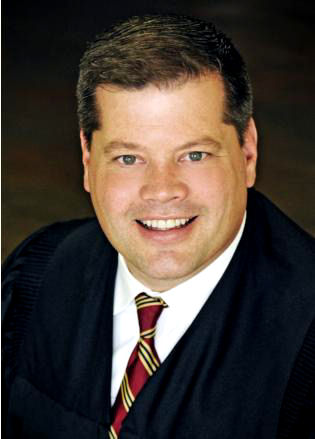
Judge Brendan J. Sheehan
2020-present
Judge Brendan J. Sheehan is currently serving a second, two-year term as the Court's Administrative and Presiding Judge.
Judge Sheehan graduated from Baldwin Wallace University and received his law degree from the Cleveland-Marshall College of Law. He earned a Master's in Judicial Studies from the University of Reno, Nevada.
Judge Sheehan has worked in numerous positions in the Justice Center, including as bailiff to Judges Donald Nugent and Peggy Foley Jones. He clerked in the Northern Ohio Federal Court, and spent time in private practice before joining the Cuyahoga County Prosecutor’s Office, overseeing the Internet Crimes Against Children Task Force. He was elected to the Cuyahoga County Common Pleas Court and took office in 2008.
After only a few months as A.J. in 2020, Judge Sheehan had to steer the Court through the COVID-19 pandemic. Ours was one of the first Courts in the nation to suspend trials. Despite the pandemic, the Court never closed, and established numerous safety protocols to protect the employees and the public.
Judge Sheehan also oversaw the establishment of remote and a number of other technological advancements; including a juror call-in system that replaced the former “show up and wait” model.
In 2020, the Court began its High Risk Domestic Violence Court, designed to reduce the risk of intimate-partner violence. Judge Sheehan also oversees the Violence Intervention Program, which counsels people arrested with a gun if that weapon was not used in a crime.
Also in 2020, the Court implemented bail reform for people charged with low level, non-violent crimes. The Court also began implementing a Jail Shelter Diversion Pilot Program to provide shelter and counseling for people prior to release.
In 2022, the Court started its fourth Drug Court docket.
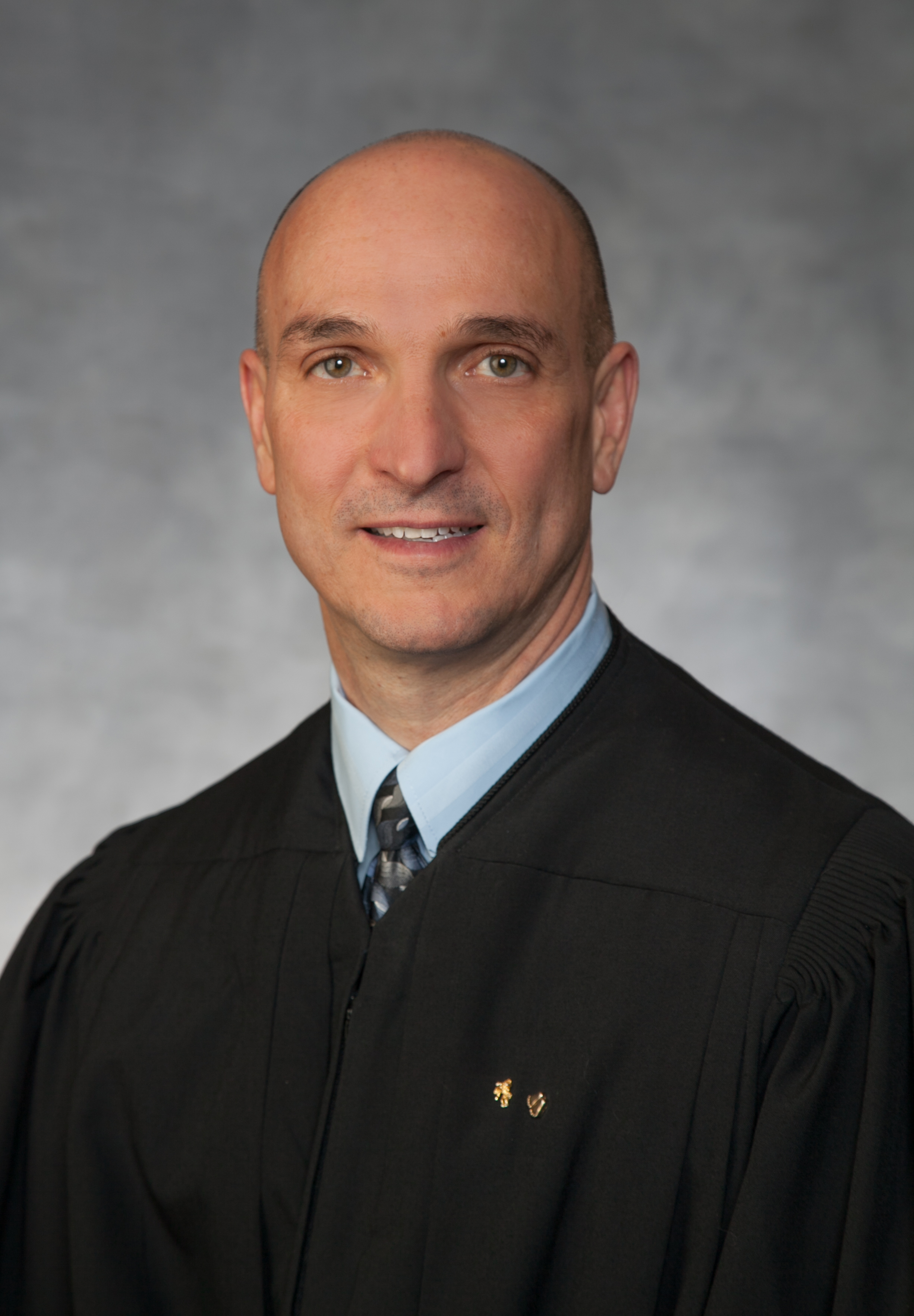
Judge John J. Russo
2014-2019
Judge John J. Russo has served as a Cuyahoga County Common Pleas Court Judge for nearly two decades.
One of nine siblings, Judge Russo graduated from John Carroll University with a business degree. In 1992, he received his law degree from the Cleveland-Marshall College of Law and practiced as an attorney for 12 years before becoming a Judge in 2005.
Judge Russo served as Administrative Judge for six years. During that time, he worked towards creating positive change with both the legal processes and with the Court’s more than 500 employees.
Judge Russo enabled electronic filings on the Criminal Docket, and instituted significant security upgrades on the Court floors. Outdated furniture from the original Justice Center was replaced, and he hired a Director of Training to strengthen the work force, including yearly training on diversity and inclusion.
Recovery Court began in 2015, assisting defendants with dual diagnosis of addiction and trauma. Veterans Treatment Court also began, helping eligible military veterans. The Stepping Up Initiative launched in 2015 to reduce the number of people with mental illness being housed in jails.
Judge Russo commissioned a Task Force to review Bail and Bond practices, which published its findings and recommendations in 2018. That same year, the Drug Lab and Probation Department moved into three renovated floors of the former Cleveland Police Headquarters. A newly redesigned website went live, and Court Administration expanded to two Deputy Court Administrators.
A texting service began in 2019, allowing the Court to send date reminders about hearings. Judge Russo helped create the Justice Center Steering Committee, which continues to explore the future of the Justice Center and jail.
Along with his time on the Bench, Judge Russo enjoys educating and instructing the next generation of attorneys.
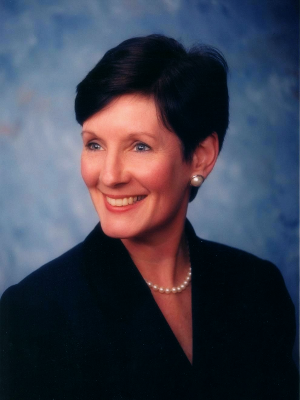
Judge Nancy A. Fuerst
2010-2013
Judge Nancy A. Fuerst, the Court’s second female Administrative Judge, is a graduate of Cleveland State University. She received her law degree from the Cleveland-Marshall College of Law and has served on the Cuyahoga County Common Pleas Court Bench since 1997. Her father, Judge Norman A. Fuerst, served on our Bench for 24 years.
Judge Fuerst was instrumental in establishing several major improvements to the Court during her tenure:
(1) the E-File system increased ease and access for users and practitioners
(2) implementation of the Foreclosure Mediation Program, which helped facilitate a way for troubled homeowners to negotiate new payment arrangements or to facilitate a graceful exit from their homes,
(3) merger of the Cleveland Municipal Court’s jury operations into ours;
(4) use of CourTools to improve transparency and evaluate ongoing court performance
(5) advancing the training and adoption of evidence based practices (EBP) in the sentencing of criminal defendants.
Judge Fuerst was a staunch advocate for the independence of the judiciary when Cuyahoga County government changed in 2011. She vigorously advocated for renovations to the Cuyahoga County Court House ahead of its centennial in 2012 and helped coordinate the anniversary celebration .
Judge Fuerst oversaw the opening of the Judge Nancy R. McDonnell Community Based Correctional Facility in 2011, and she served on the Advisory Board for several years. She marshalled votes for adoption of the Commercial Docket. Judge Fuerst also obtained a pay increase for Court staff and balanced the court budget.
Two of the county’s biggest cases happened when Judge Fuerst was Administrative Judge; the trial of serial killer Anthony Sowell in 2011 in front of Judge Dick Ambrose, and the 2013 case of kidnapper Ariel Castro in front of Judge Michael Russo.
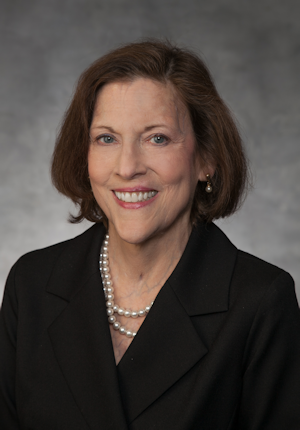
Judge Nancy R. McDonnell
2006-2009
Judge Nancy R. McDonnell was the Court's first female Administrative and Presiding Judge, and served nearly 25 years on the Bench starting in 1997.
Judge McDonnell was a graduate of The Catholic University of America and received her law degree from the Cleveland-Marshall College of Law.
Judge McDonnell served as an assistant Cuyahoga County Prosecutor in the Criminal Drug Division and the Major Trial Division, and became a magistrate for the Lakewood Municipal Court in 1991.
In 2008, after decades of heated debate, our Judges approved open discovery, which mandates that prosecutors share all evidence for and against an accused citizen in criminal matters.
In 2006, the Court began a pilot program with two municipal courts to speed up the processing of indictments and assign a defense counsel within days of arrest. The Re-Entry Court docket was established in 2007, and the Commercial Docket was created in 2008. The first Cuyahoga County Drug Court docket began in 2009.
In 2008, Gregory M. Popovich became the Court Administrator. Also in 2008, the Court moved to implement evidence-based practices.
Judge McDonnell led the final efforts to build Cuyahoga County’s Community Based Correctional facility (CBCF), brining State, County and City of Cleveland officials together. Her efforts also secured millions of dollars in State funding for the project. The CBCF opened in 2011 and the Facility Governing Board voted to name the facility after Judge McDonnell.
During her tenure as Administrative Judge, Nancy McDonnell received a double lung transplant. During her recovery, Judge Eileen A. Gallagher was appointed as the acting Administrative Judge.
Judge McDonnell also had the opportunity to preside over one of the Court's Drug Court dockets before she passed away on September 28, 2021.
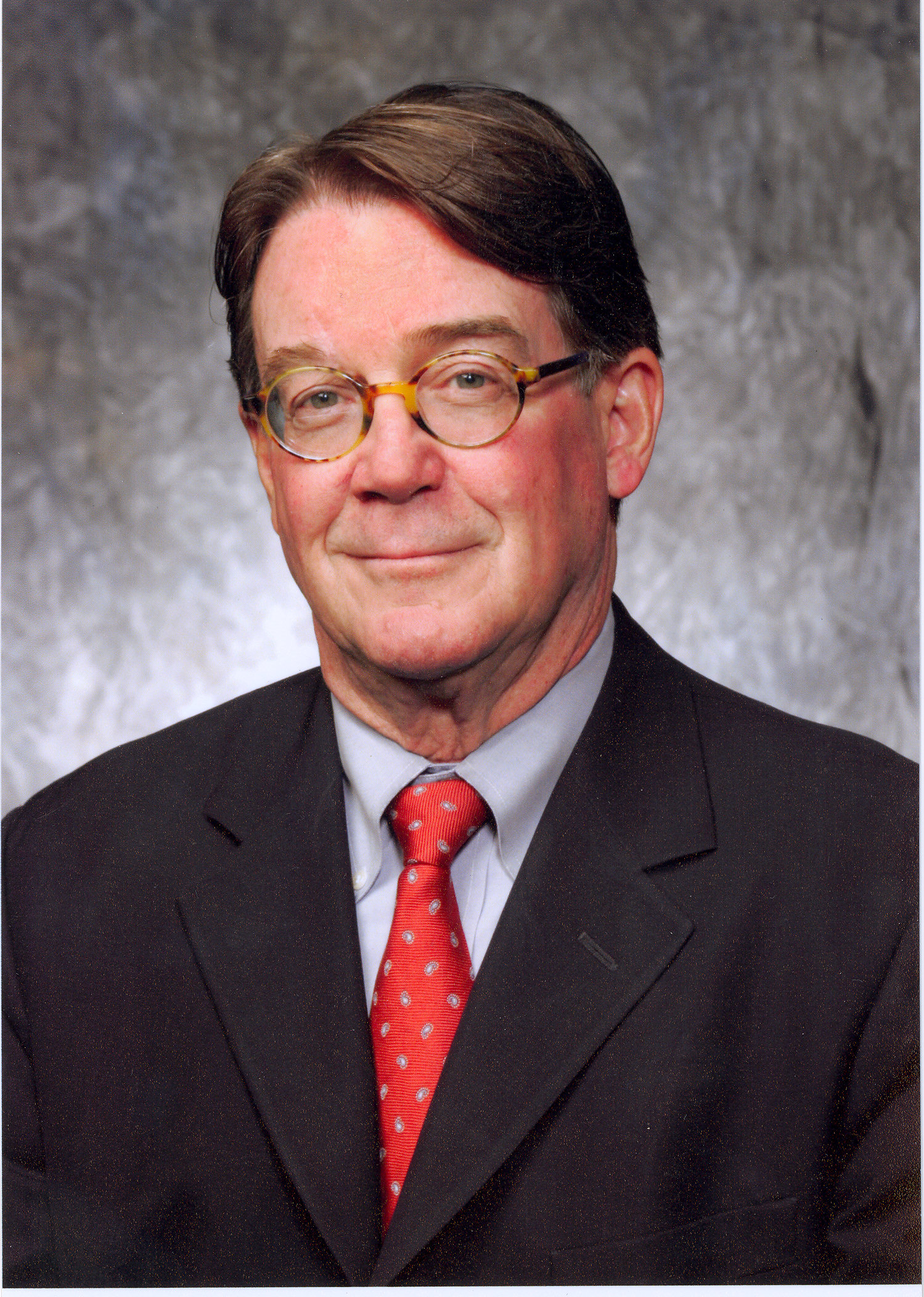
Judge Richard J. McMonagle
1997-2005
Judge Richard J. McMonagle was the Court’s second longest serving Administrative Judge.
Judge McMonagle received his undergraduate degree from Villanova University and his J.D. from the Case Western Reserve University School of Law. Before joining the Court in 1979, McMonagle worked as an attorney in private practice.
As Administrative Judge, McMonagle managed the Court in the days after September 11, 2001. After that, the public started going through security on the first floor. He was also A.J. during the blackout of 2003, one of the few times the Court ever had to close.
During his term as Administrative Judge, the Mental Health and Developmental Disabilities Docket was created. Judge McMonagle also oversaw the creation of the Court’s on-line docket and a special docket for asbestos cases.
After computer upgrades in 1999, the random selection of Judges for cases was computerized after nearly 30 years of using a card system. The Court also pioneered remote hearings and modernized its case management system. Technology upgrades on the court floors and the arbitration office were installed.
As Administrative Judge, Richard McMonagle acquired the funding to build the community-based correctional facility in Cleveland, and jury service was reduced from two weeks to one.
It was also under Judge McMonagle that the Court hired staff attorneys for each Judge, and brought the pay of probation officers in line with those of other courts. The Court also opened its William Danko Education Center on the 12th floor.
In 2005, former Judge Thomas J. Pokorny became the fourth Court Administrator.
Judge McMonagle retired in January 2015 after 36 years on the Bench and continues to serve as a visiting judge in the county and around the state.
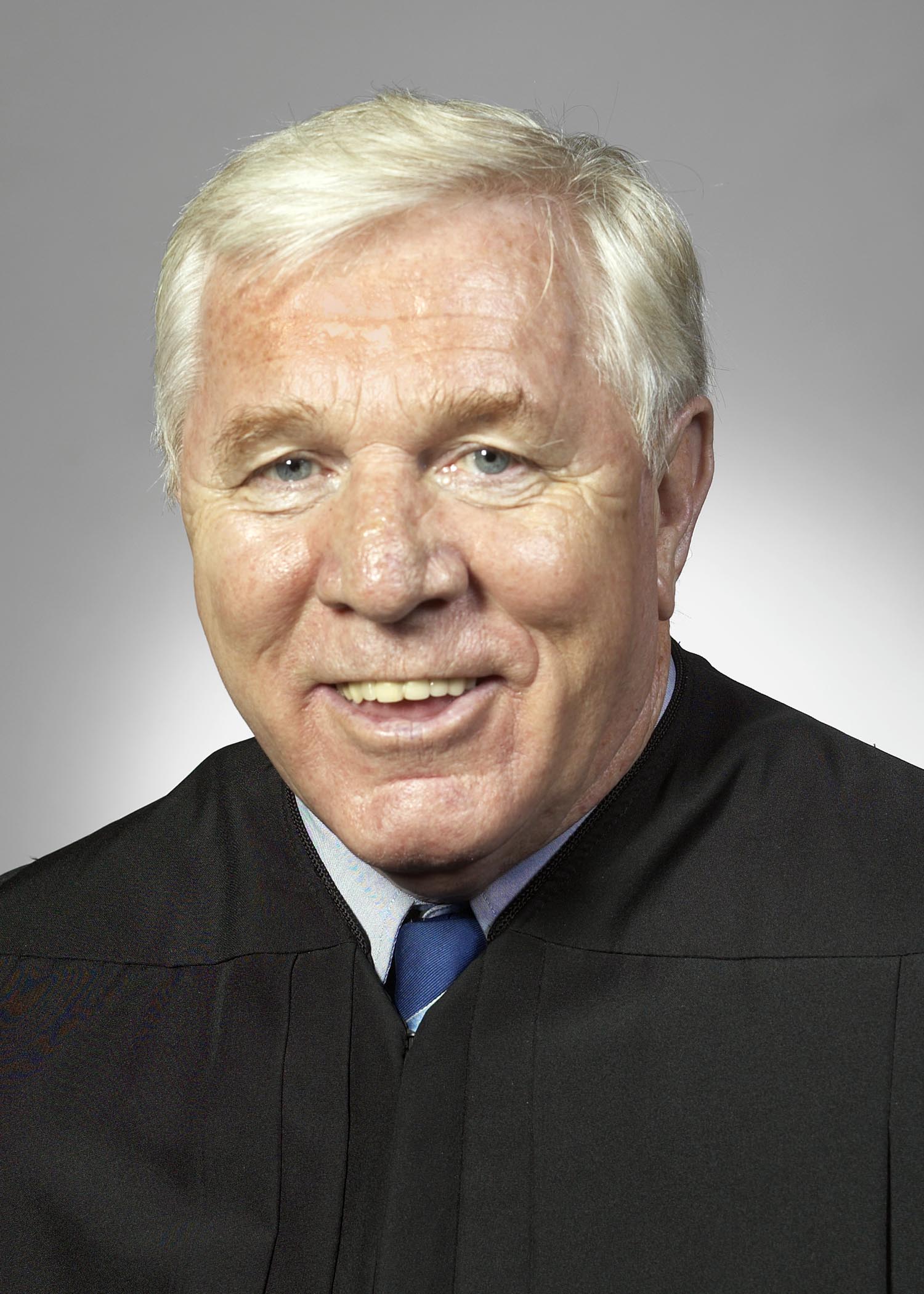
Judge James J. Sweeney
1993-1996
Judge Sweeney served in the Army from 1960 to 1962. He received his undergraduate degree from Cleveland State University in 1970 and went on to earn his law degree from the Cleveland-Marshall College of Law in 1973. At one point, Judge Sweeney worked as a U.S. Post Office mail carrier, something of which he was always proud.
Judge Sweeney began his legal career in 1974 as an assistant Cuyahoga County Prosecutor. In 1979, he became an Assistant Attorney General. Judge Sweeney worked as a lawyer until 1981, when he was elected to the Cuyahoga County Common Pleas Court. Judge Sweeney served in the General Division until 1997.
In 1994, an Ohio Supreme Court review of our Court’s Mediation Program determined it was effective, and should be replicated in other jurisdictions. That same year, the Court instituted video arraignments which allowed defendants the option to appear from the jail. Court reporters acquired equipment in 1994 allowing real-time transcription, and five reporters trained in the new technology.
In 1994, Cuyahoga County’s investment program collapsed, and an 11% budget reduction was required from the Court, halting capital improvement projects.
The State of Ohio completed an extensive revision of the criminal code on July of 1996, resulting in revisions in Court operations, including pleas and sentencings.
Judge Sweeney was elected to the 8th District Court of Appeals in 2001.He was re-elected in November of 2006 to a six-year term that ended in January 2013. Judge Sweeney retired at the end of his term.
Judge Sweeney passed away in January 2025 after a long illness.
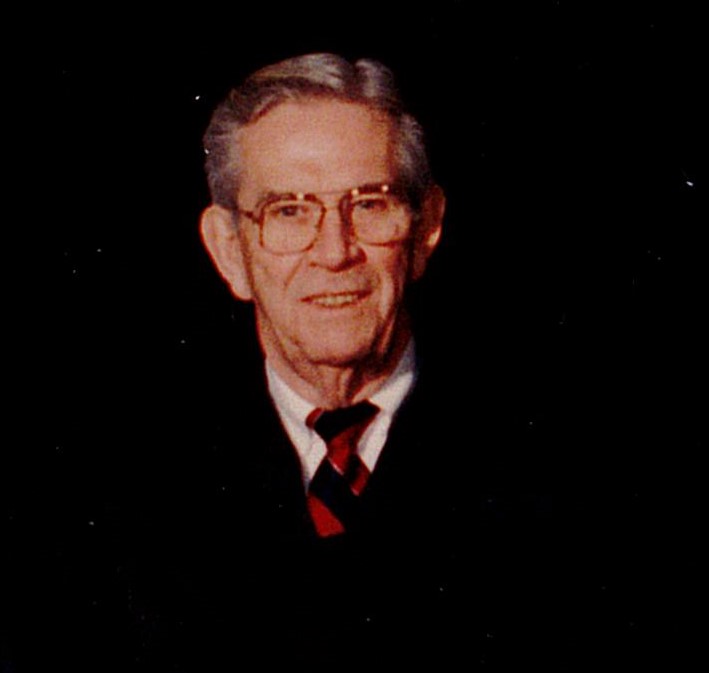
Judge Frank J. Gorman
1991-1992
Judge Frank J. Gorman was born in 1917 and started his legal career as an attorney.
In 1964, Judge Gorman represented the United States at the 1964 Summer Olympics in Tokyo, where he received a silver medal in men's three meter springboard.
Elected to the Ohio House of Representatives in 1965, he became the Democratic whip in 1968. After leaving the legislature, Gorman became a Judge in the Cuyahoga County Common Pleas Court.
Judge Gorman served on Bench from 1969 until 1992. In his final two years, Judge Gorman served as Administrative Judge.
In 1991, the Court began installing an 11 terminal Local Area Network to allow for better sharing of data, along with a new, computerized Probation Management Information System. The Criminal Records Department also implemented technology to modernize the Arraignment Room process.
In 1992, the Judges agreed to eliminate the Court’s committee structure, and adopt new rules of governance. That same year, the process of summoning jurors and determining eligibility was streamlined, and jury duty was reduced from two weeks to one.
In his first year as Administrative Judge, Judge Stephanie Tubbs-Jones resigned to become the first African-American woman to be Cuyahoga County Prosecutor, and was later elected to the U.S. Congress.
Judge Gorman died in 1997 at the age of 80.
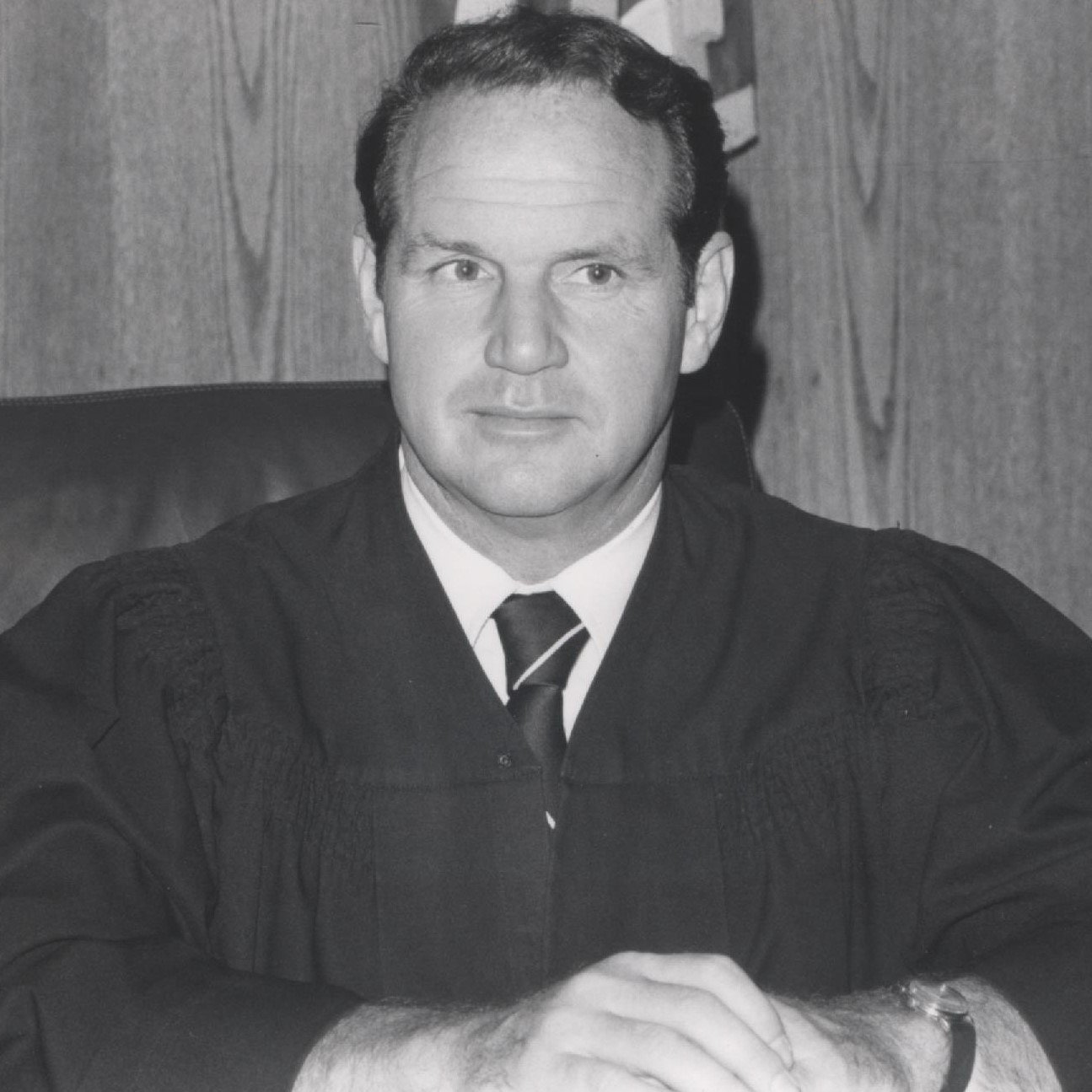
Judge Leo M. Spellacy
1975-1990
Judge Leo M. Spellacy was the longest serving Administrative Judge in the Court's history.
Born in 1934, Judge Spellacy graduated from Georgetown University and Case Western Reserve University’s School of Law.
Judge Spellacy served as an assistant to Cuyahoga County Prosecutor John T. Corrigan. He was an attorney in Sam Sheppard’s second murder trial in 1966, facing off against famed attorney F. Lee Bailey.
Spellacy was elected as a Judge in the Cuyahoga County Common Pleas Court in 1968 and served four consecutive terms, leaving our bench in 1990. He was not the first Judge in his family. His sister, Judge Margaret Spellacy, served on the Juvenile Court Bench and was just the second woman elected Judge in Cuyahoga County.
Numerous changes came to the Court under Judge Spellacy’s 15 years as Administrative Judge. The Bench was expanded to 31 Judges in 1976 after Judge Spellacy brought the continuing backlog of cases to the attention of the Ohio Legislature. The Bench expanded to its current 34 Judges in 1984.
In 1976, the new Justice Center and Jail opened to much fanfare, and the Cuyahoga County Public Defender’s Office was created.
In 1988, the Supreme Court of Ohio created the Commission on Continuing Legal Education. This required continuing legal education for Ohio attorneys and regulated the provision of continuing legal education of Ohio judges. Also in 1988, William L. Danko became the Court’s third Administrator.
Judge Spellacy was elected in 1990 as a judge for the Eighth District Court of Appeals and was re-elected in 1996. He retired in 2001, but oversaw that Court’s Asbestos Docket until 2013.
Judge Spellacy passed away in May of 2021 at the age of 86.
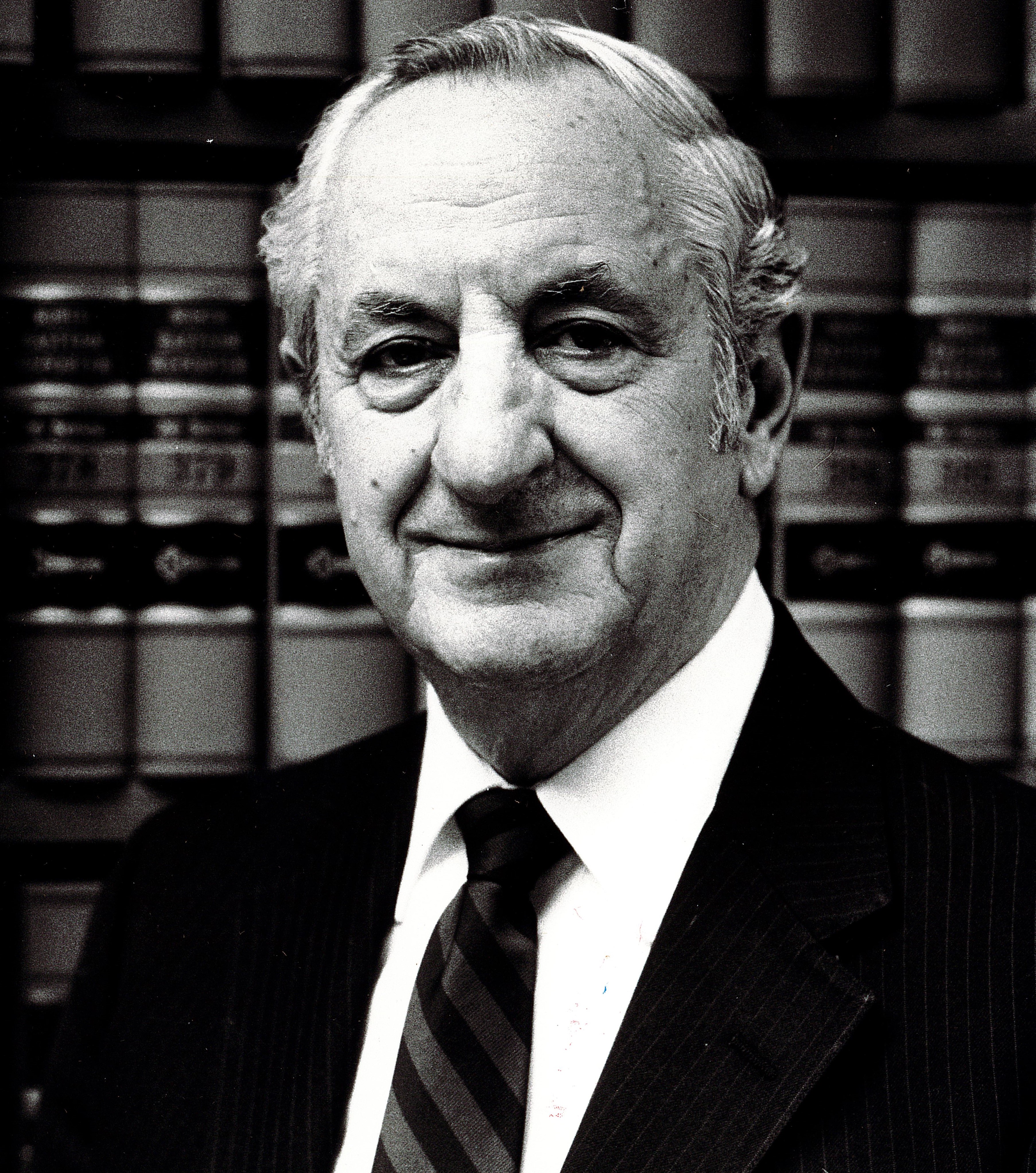
Judge Thomas J. Parrino
1973-1974
Judge Thomas J. Parrino was an Air Force veteran who served in WW II. Prior to becoming a Judge, Parrino served in the Cuyahoga County Prosecutor’s Office under Frank T. Cullitan. In 1954, Parrino prosecuted the infamous Dr. Sam Sheppard case, in which Sheppard was convicted of killing his wife, Marilyn.
In 1955, Judge Parrino filled a vacancy in the Cleveland Municipal Court, where he served until he joined the Common Pleas Court in 1959. He made national headlines in 1966 by ordering a special grand jury session to investigate the week of racial rioting in the Hough area of Cleveland earlier that year.
During his tenure as Administrative Judge, construction on the Justice Center began. In 1973, a redesign by architect Pietro Belluschi was approved, which added the galleria.
Parrino was one of a handful of Judges who helped develop the Ohio Rules of Criminal Procedure. The Common Pleas Court’s second Administrator, John J. Curran, began his new job that same year.
After 15 years on our Bench, Judge Parrino joined the Eighth Ohio District Court of Appeals in 1974, where he served until his retirement in 1985. After his retirement, he continued to serve as a visiting judge in the Court of Appeals and the Ohio Supreme Court for many years.
Judge Parrino was awarded the Ohio Supreme Court Distinguished Service Award. He was known for his command of the important details of each case, and for asking concise, thoughtful questions.
Judge Parrino died in November of 2006 at the age of 89.
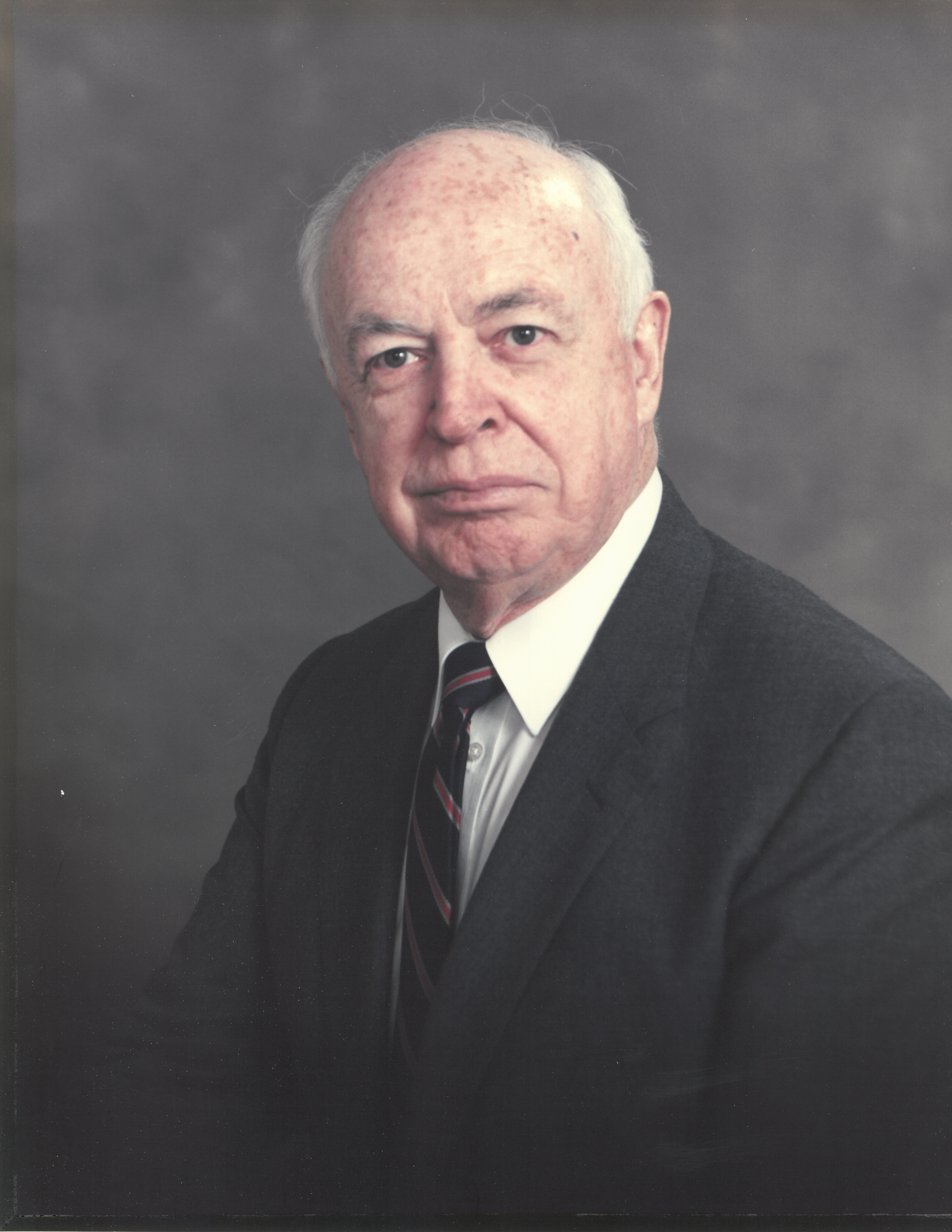
Judge John V. Corrigan
1969-1972
Judge John V. Corrigan graduated from John Carroll University in 1943, then served in the U.S. Army and served in WWII as a medical technician sergeant. After the war, Judge Corrigan attended law school at Western Reserve University.
In 1953, Judge Corrigan was appointed to the Cleveland Municipal Court. In 1956, at age 36, he became the youngest person at that time elected to the Cuyahoga County Common Pleas Court and ran unopposed in his next three elections.
An active judicial reformer, Judge Corrigan helped lead the fight for the adoption of the Modern Courts Amendment in 1968, the first overhaul of the Ohio courts since the 1851 Constitution.
That amendment placed the Ohio Supreme Court in full administrative control of Ohio courts, and, among other reforms, required judicial candidates to be younger than 70 before they could be elected or re-elected. This reorganized courts at the trial level, making the individual docket possible in 1972. He also chaired the writing of the Ohio Rules of Civil Procedure.
The Amendment changed the title of “Chief Justice” to “Administrative Judge”. During his tenure, Judge Corrigan ended the practice of the courts recessing during the summer months, got air conditioners for the old Criminal Courts Building and the Lakeside Court House, and, by 1972, he fully implemented the individual docket system. He created the task forces charged getting tax levy approval for the design and construction the new Justice Center and jail. His portrait hangs on the fourth floor of this very building.
Judge Corrigan joined the Eighth Ohio District Court of Appeals in 1972. After retiring from the Appellate Court in January 1991, Corrigan worked by special assignment through 1995.
Judge Corrigan died in December of 2004 at the age of 84.
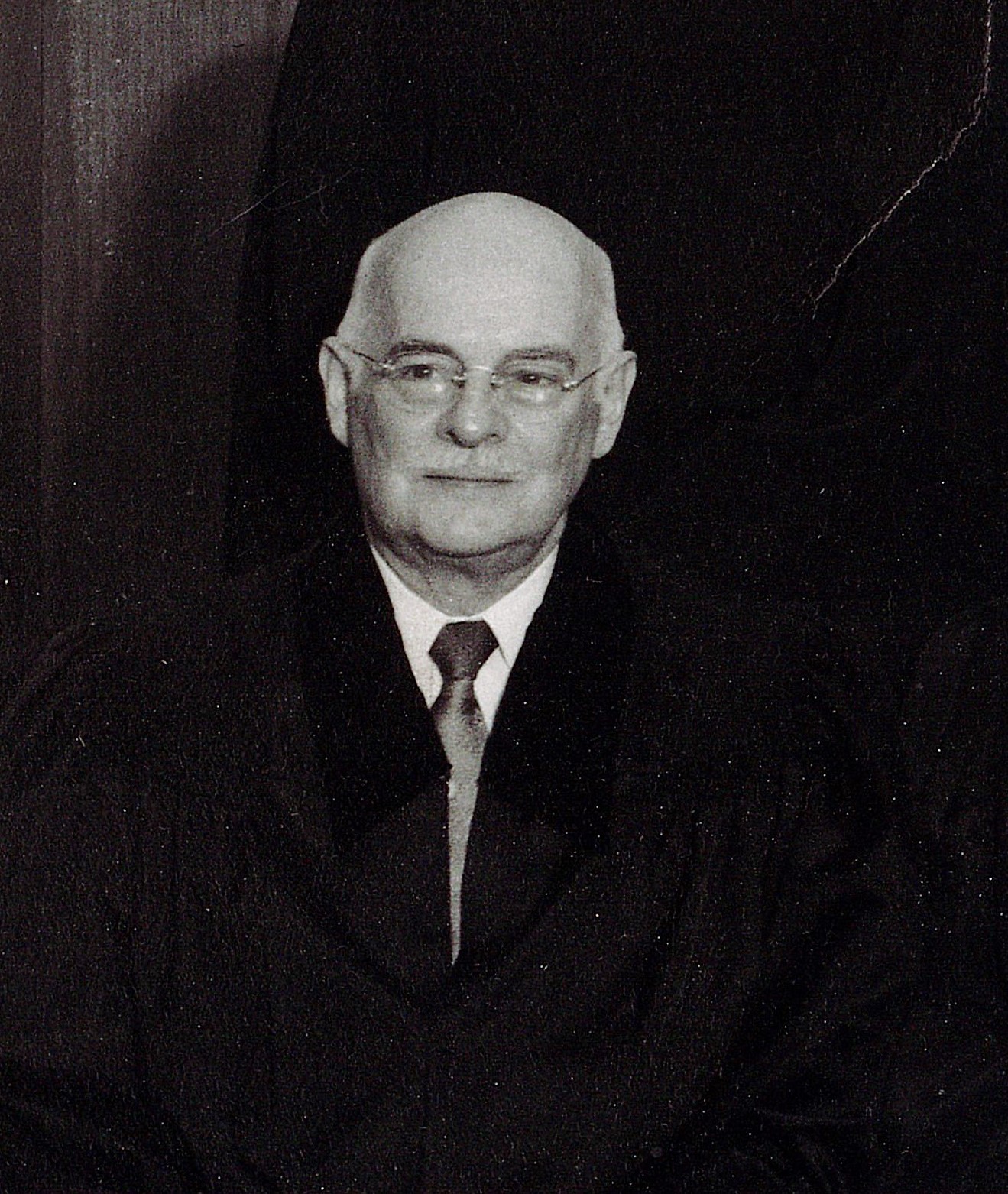
Judge Donald F. Lybarger
1967-1968
Judge Donald F. Lybarger was born in Harrisburg, Pennsylvania, and served in the U.S. Navy during World War I. He graduated from Gettysburg College in 1919, and came to Cleveland in 1920 to attend law school at Western Reserve University. In 1923, Judge Lybarger was admitted to the bar and he joined the firm of Horn, Weisell, McLaughlin & Lybarger.
In 1932, Judge Lybarger was elected Cuyahoga County Recorder, and then to the Cuyahoga County Common Pleas Court in 1949. In 1958, he presided over the landmark Mapp v Ohio case that went to the U.S. Supreme Court.
While he was serving as Administrative Judge in 1968, the U.S. Supreme Court ruled on the landmark Terry v. Ohio case that allowed police to “stop and frisk” a suspect if the officer has reasonable suspicion that the suspect has committed a crime. The original case was presided over by Judge Bernard Friedman.
A life-long stamp collector, Judge Lybarger wrote The United States Issues of 1918-1920, published in 1937. He served as American Philatelic Society President from 1943 to 1949, just before his election to the Bench.
Judge Lybarger served on our Bench until 1969, and died in November of 1970 at the age of 74.

Judge Arthur H. Day
1963-1966
Judge Arthur H. Day was born in 1890 and attended Ohio Wesleyan University. Judge Day received his law degree from the Cleveland Law School in 1916, and then served as a captain in the United States Army from 1918 to 1919. A member of the Allied Expeditionary Forces in World War I, he was wounded in action August 5, 1918.
Day served two terms in the Ohio State Senate in the 1920s. He was elected to the Cleveland Municipal Court in 1931, and then to the Cuyahoga County Common Pleas Court in 1932. Justice Day was elected to a six-year term to the Ohio Supreme Court in November 1934.
After his term in the Ohio Supreme Court, Judge Day was again elected to the Cuyahoga County Common Pleas Court in 1942, and went on to serve four terms.
In 1963, Judge Day argued that the Court’s 21 Judges were not enough to keep up with the caseload. In 1967, the Ohio legislature would add five more Judges.
When he was Administrative Judge in 1964, the U.S. Supreme Court ruled on the landmark Jacobellis v. Ohio case from Cleveland dealing with the definition of obscenity. In 1966, the U.S. Supreme Court overturned the conviction of Dr. Sam Sheppard. A second trial was held in front of Judge Francis Talty, and Sheppard was found not guilty of killing his wife, Marilyn.
Judge Day was re-elected to a fifth term as Judge, but died before serving any of it on January 11, 1967, at the age of 77.
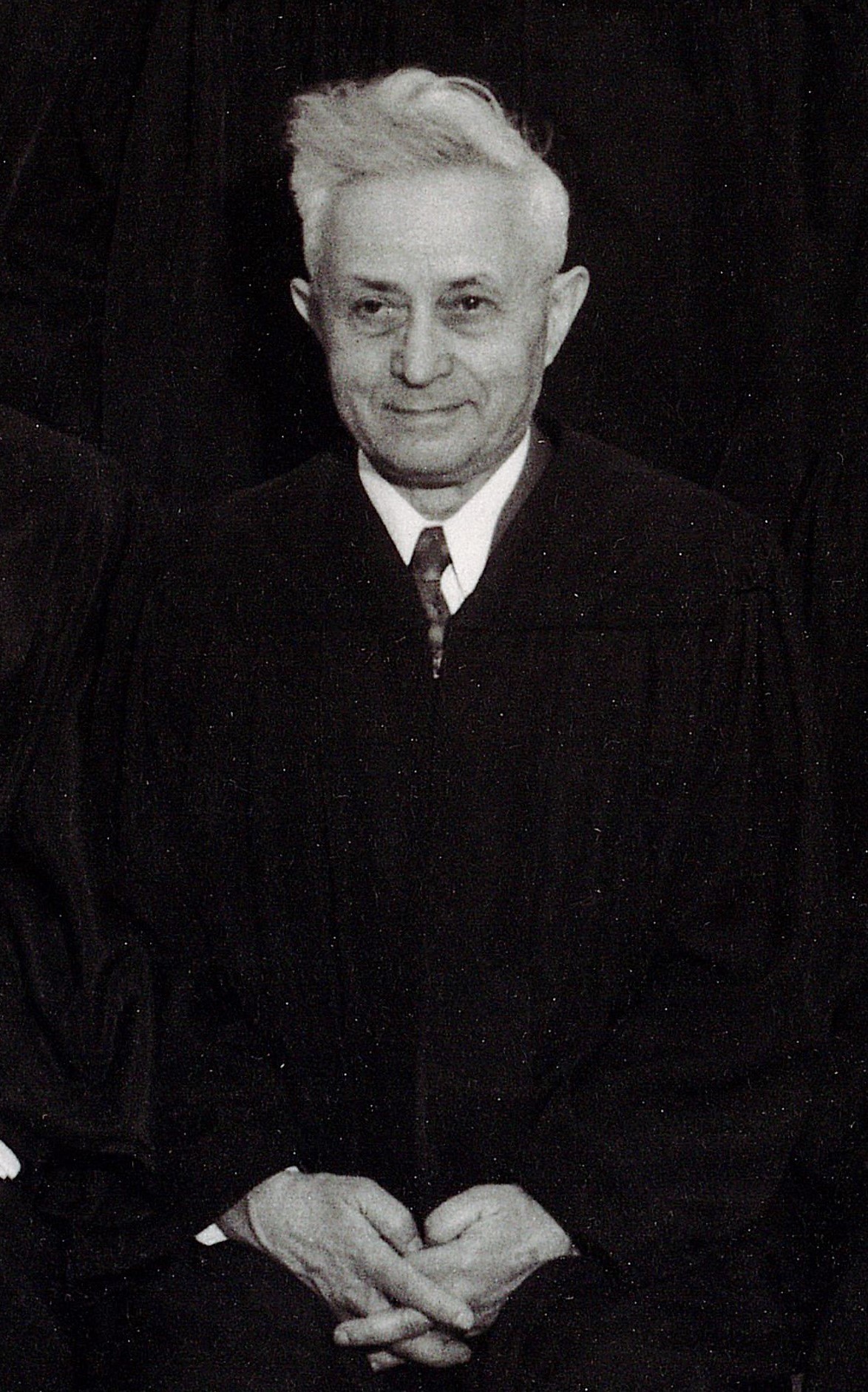
Judge Samuel H. Silbert (Chief Justice)
1955-1962
Judge Samuel H. Silbert was born in Kiev, Ukraine. He moved to Newark, N.J., at age six with his widowed mother and worked selling newspapers and in an ink factory.
Judge Silbert came to Cleveland in 1902 and graduated from Cleveland Law School in 1907. He served in the Cleveland Municipal Court from 1915 until 1924, when he was elected to the Cuyahoga County Common Pleas Court. Judge Silbert specialized in divorce proceedings, handling almost 100,000 cases in his career. Judge Silbert became a nationally recognized authority on domestic relations, divorce, and marital law. With his support, the Cuyahoga County Domestic Relations Court was created in 1959 with two Judges.
In 1957, the Bench voted to create a Court Administrator position. John J. Lavelle was the first to hold that role, and remained Court Administrator until 1974. To date, only five people have that title.
In 1961, while he was Administrative Judge, the U.S. Supreme Court ruled on the landmark Mapp v. Ohio case from Cleveland dealing with the seizure of evidence. That trial was presided over by future Administrative Judge Donald F. Lybarger.
Judge Silbert retired in 1969 and died in February of 1976 at the age of 93.
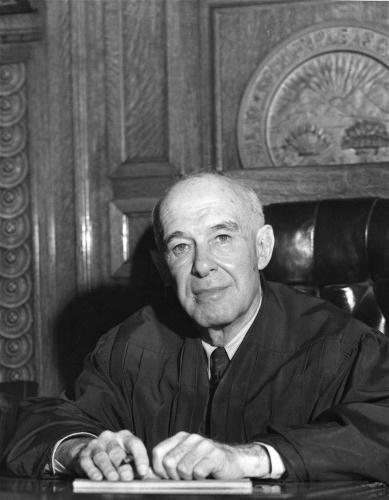
Judge Samuel E. Kramer (Chief Justice)
1954
Before 1952, the Cuyahoga County Common Pleas Court did not have one Judge leading the Court. That changed in 1952 when the position of “Chief Justice” was created by a vote of the Bench, and it became effective in October of 1953.
Judge Samuel E. Kramer was elected by his colleagues to be the Court’s first Chief Justice. Born on December 4, 1878, in Newark, Ohio, Judge Kramer attended Adelbert College and Western Reserve University. He was admitted to the Ohio bar in 1903, and served on the Cuyahoga County Common Pleas Court Bench from 1919-1955.
Judge Kramer was also a member of the Cleveland City Council from 1908-1912, and served on the Cleveland Municipal Court Bench from 1913-1918. When he was on the Municipal Court Bench, the nation’s first stoplight debuted in 1914 at the corner of Euclid Ave. and East 105th street in Cleveland. To this day, that Court handles the majority of traffic cases in the city.
During his time as Judge on our Bench, Kramer also served on the Cleveland Planning and Zoning Commission (1921-1946).
Judge Kramer died in March of 1960 at the age of 81.